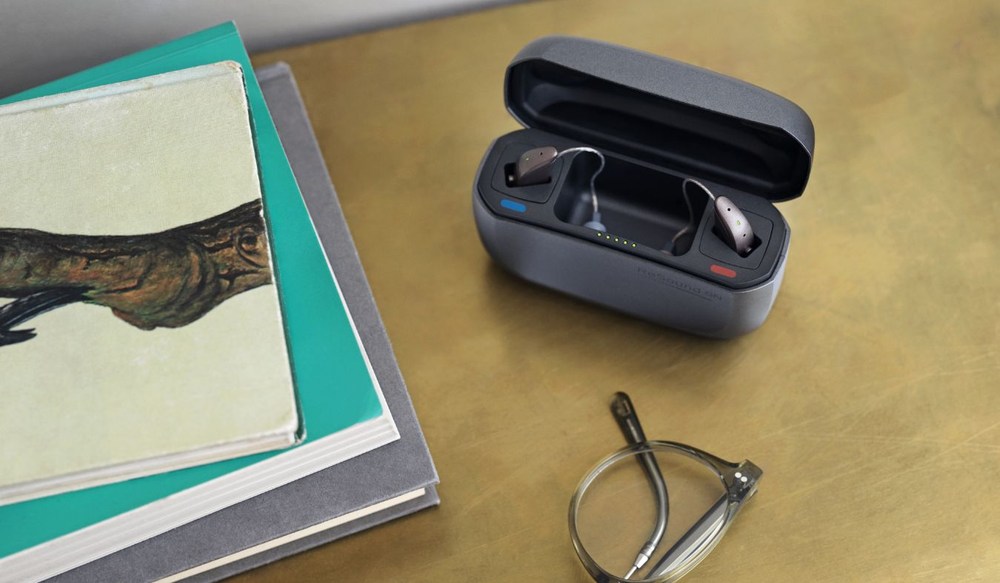How Smart Home Devices Are Improving Hearing Care
Smart home devices are changing how people with hearing challenges manage

By: admin | September 25, 2024
Hearing loss doesn’t spell the end of your driving days. Keeping your independence and the freedom that comes with driving is vital to many. And guess what? With the right strategies, it’s totally achievable.
Driving is more than just a visual task. It requires quick reactions and decision-making based on various cues, including sounds. When hearing loss comes into play, these auditory signals might be less noticeable. But don’t worry, there are plenty of strategies and technologies out there designed to help those with hearing loss continue to drive safely and confidently.
Aging affects hearing through a process known as presbycusis, which is the gradual loss of hearing that occurs as people get older. This condition typically involves a decline in the ability to hear high-frequency sounds, which are crucial for understanding speech and distinguishing between different sounds. As we age, the tiny hair cells in the inner ear, responsible for converting sound vibrations into electrical signals for the brain, begin to deteriorate. This loss of hair cells reduces the ability to hear certain pitches and can make it challenging to understand conversations, especially in noisy environments.
Changes in the auditory nerve, which carries signals from the inner ear to the brain, also contribute to hearing loss. Over time, the nerve fibers may become less efficient at transmitting sound signals, leading to a decrease in overall hearing sensitivity. Additionally, age-related changes in the structures of the ear, like the thickening of the ear canal and changes in the elasticity of the eardrum, can further impact hearing.
Aging can also affect the brain’s processing of auditory information. The ability to interpret and make sense of sounds may diminish, making it harder to follow conversations or recognize familiar sounds. This can lead to difficulties in social interactions and contribute to feelings of frustration or isolation.
Aging can significantly impact driving abilities in various ways, affecting both safety and confidence on the road. Visual impairments, like reduced acuity and increased sensitivity to glare, are common among older adults and can hinder one’s ability to see clearly, judge distances and respond to hazards. Cognitive decline, including slower reaction times and difficulties with memory and decision-making, can make it challenging to navigate complex traffic situations or react promptly to sudden changes.
Motor skills and coordination often decline with age, affecting the smooth handling of a vehicle. Fine motor skill issues can make tasks like steering and operating controls more difficult. Hearing loss further compounds these challenges, as diminished auditory perception can reduce awareness of important sounds like sirens or horns, impacting response times to auditory cues. Additionally, physical limitations from conditions like arthritis can affect the ability to maneuver the vehicle comfortably and safely. Medications often used by older adults may also contribute to drowsiness, dizziness or impaired concentration, further impacting driving performance. Finally, increased fatigue and reduced stamina can affect alertness and focus during long drives, emphasizing the need for regular check-ups and adjustments to driving habits to maintain safety on the road.
Driving isn’t just about what you see, it’s also about what you hear. Sounds like honking horns, sirens and even alerts from a radio station are essential to keeping you responsive on the road. If you’re dealing with hearing loss, these important auditory cues might not be as distinct.
But don’t let this discourage you from maintaining your independence on the road. With the right strategies and technologies, you can still drive with confidence. By understanding how hearing influences safe driving and taking proactive steps to compensate for any hearing loss, you can continue to enjoy your freedom while ensuring safety for yourself and others on the road.
Driving with hearing loss does come with certain obstacles. Recognizing these is the first step towards overcoming them. Common issues might include missing out on important auditory cues like sirens or horns, difficulty communicating with passengers or not hearing the sounds of potential car malfunctions.
Awareness of these challenges prepares you for what to expect and enables you to manage them effectively. With this knowledge, you can use strategies and technologies designed to assist those with hearing loss in driving safely. This understanding can provide a sense of security and confidence while on the road, enhancing your overall driving experience.
The relationship between hearing and reaction speeds on the road is a key aspect of driving safely with hearing loss. Sound cues, like a car honking or an emergency siren, can alert you to potential dangers and allow for quick reactions. However, if these auditory signals are muffled or missed due to hearing loss, your response time may be affected.
Slower reaction times don’t necessarily mean unsafe driving. It simply means that you may need to take extra precautions and make certain adjustments to ensure safety on the road. For instance, reducing distractions in the car can help you focus more on visual cues.
Modern technology offers a variety of supportive tools designed specifically for drivers with hearing loss. From visual alert systems that signal when a siren is sounding nearby, to amplified devices that boost sound inside your vehicle, these technologies can greatly enhance your ability to react swiftly and appropriately while driving. By taking advantage of these resources and remaining vigilant about your surroundings, you can continue to drive safely and confidently despite any hearing loss.
Navigating through traffic can be tricky, especially when hearing loss is part of your daily life. However, there are ways to use auditory cues to your advantage. One tip is to keep your car windows slightly open. This allows you to hear outside noises more clearly, like other vehicles or pedestrians.
Another strategy is using technology designed for drivers with hearing loss. There are devices available that amplify sounds inside the car or alert you visually when certain sounds occur outside. This can help you react more quickly and make safer decisions on the road.
Lastly, consider taking a defensive driving course. These classes teach strategies for anticipating potential hazards and reacting appropriately, which can be particularly helpful if you’re relying less on auditory cues. With these tips and tools at your disposal, navigating through traffic with hearing loss becomes a manageable task rather than an overwhelming challenge.
Technological advancements are incredibly beneficial for drivers with hearing loss. From alert systems to amplification devices, there are numerous solutions available today that make driving safer and more enjoyable for individuals with hearing loss.
These technologies work in various ways to assist you on the road. Some amplify the sounds inside your vehicle, making it easier for you to hear important auditory cues. Others provide visual alerts when certain sounds occur outside your car, like a siren or a horn honking. These tools not only enhance your driving experience but also give you peace of mind knowing that you’re taking proactive steps towards ensuring safety on the road.
By using these innovative tools and maintaining an active awareness of your surroundings, you can continue to drive confidently and safely despite any hearing loss.
Modifying your car can significantly enhance sound feedback, making driving safer and more enjoyable for those with hearing loss. The key lies in understanding what modifications are most beneficial and how to implement them effectively.
There are several ways to improve sound feedback in your vehicle. One effective method is installing a car audio amplifier. This device boosts the volume of sounds inside your car, making it easier for you to hear important auditory cues like sirens or horns. Another option is using a visual alert system that signals when certain sounds occur outside your vehicle, allowing you to respond appropriately even if you can’t hear the sound clearly. Always remember to consult with an audiologist before making any modifications to ensure they are suitable and safe for your specific needs.
Hearing aids offer a practical solution for managing hearing loss, and their benefits extend to enhancing driving safety. By amplifying sounds and improving clarity, hearing aids help restore the ability to hear critical auditory cues while driving. This includes hearing sirens, horns and other important noises that might otherwise be missed, allowing for quicker and more accurate reactions to potential hazards.
Adjusting hearing aids to fit personal hearing needs ensures that the device enhances relevant frequencies without overwhelming background noise. This tailored amplification can make it easier to focus on essential sounds, improving overall situational awareness. For drivers, this means better detection of approaching emergency vehicles, changes in traffic conditions and other auditory signals crucial for safe driving.
Improved hearing provided by these devices can reduce the cognitive load associated with trying to make out sounds, allowing for better concentration on the road and more efficient decision-making. By addressing hearing loss with hearing aids, drivers not only improve their auditory perception but also enhance their ability to navigate complex driving environments safely. Regular maintenance and adjustments to hearing aids further ensure that they continue to provide optimal performance, contributing to a safer driving experience.
With the right strategies and supportive technologies, driving can remain a safe and enjoyable part of your life. If you’re considering using assistive technology or simply want to discuss more options for safer driving, our team at Little Rock Audiology Clinic is here to help. You can reach our Little Rock, AR office by calling (501) 664-5511.
Don’t hesitate to reach out – we’re ready to assist in making your driving experience safer and more comfortable. It’s not just about overcoming obstacles; it’s about adapting and finding new ways to enjoy life on the road safely and successfully.

Smart home devices are changing how people with hearing challenges manage
By: admin | November 18, 2025

You probably don’t realize how much work your brain does throughout
By: admin | September 24, 2025

Spring pulls us outdoors for gardening, hiking, biking and countless other
By: admin | May 23, 2025
